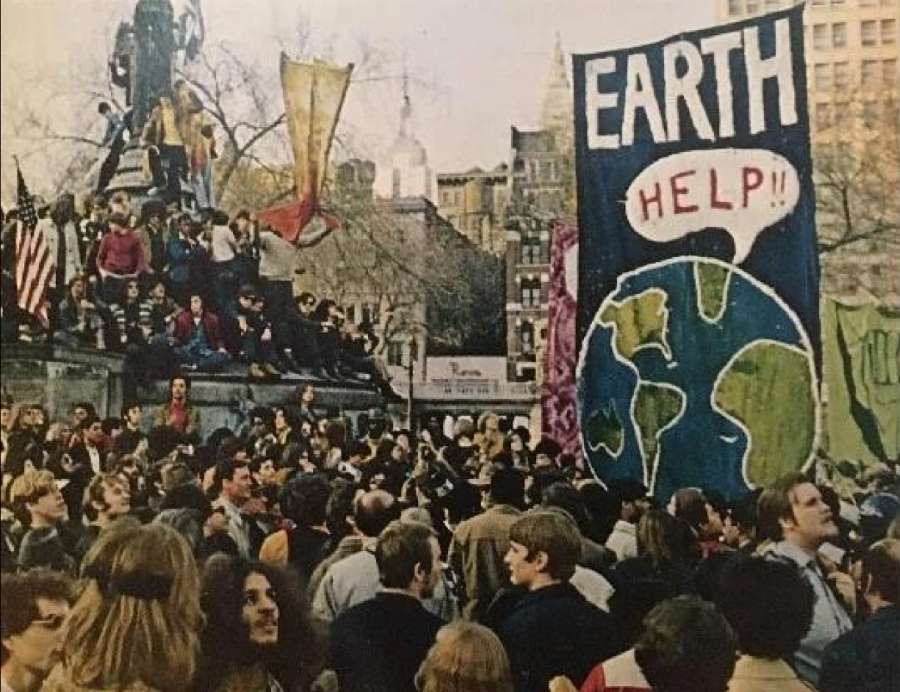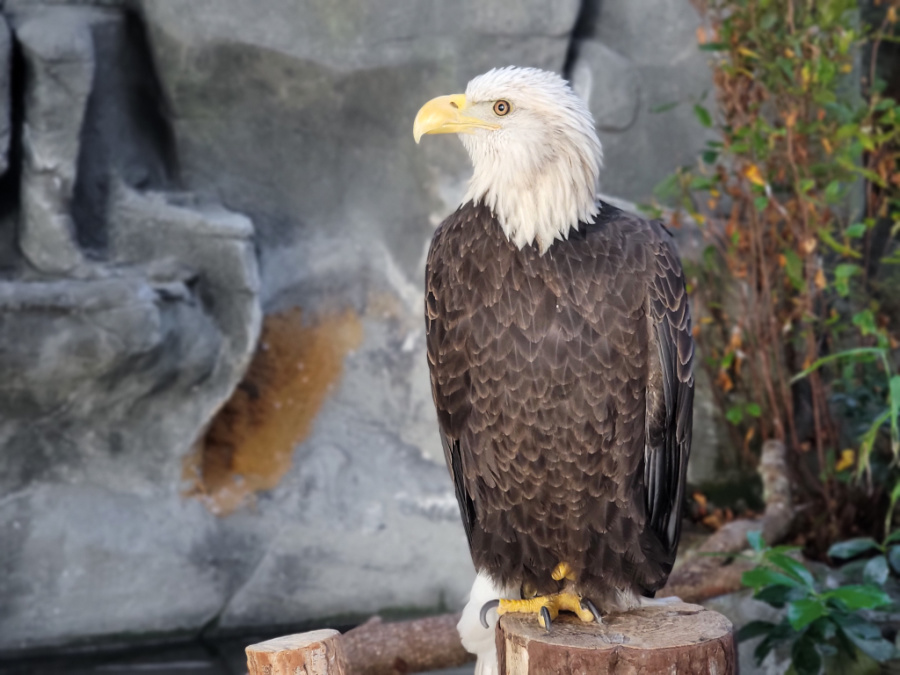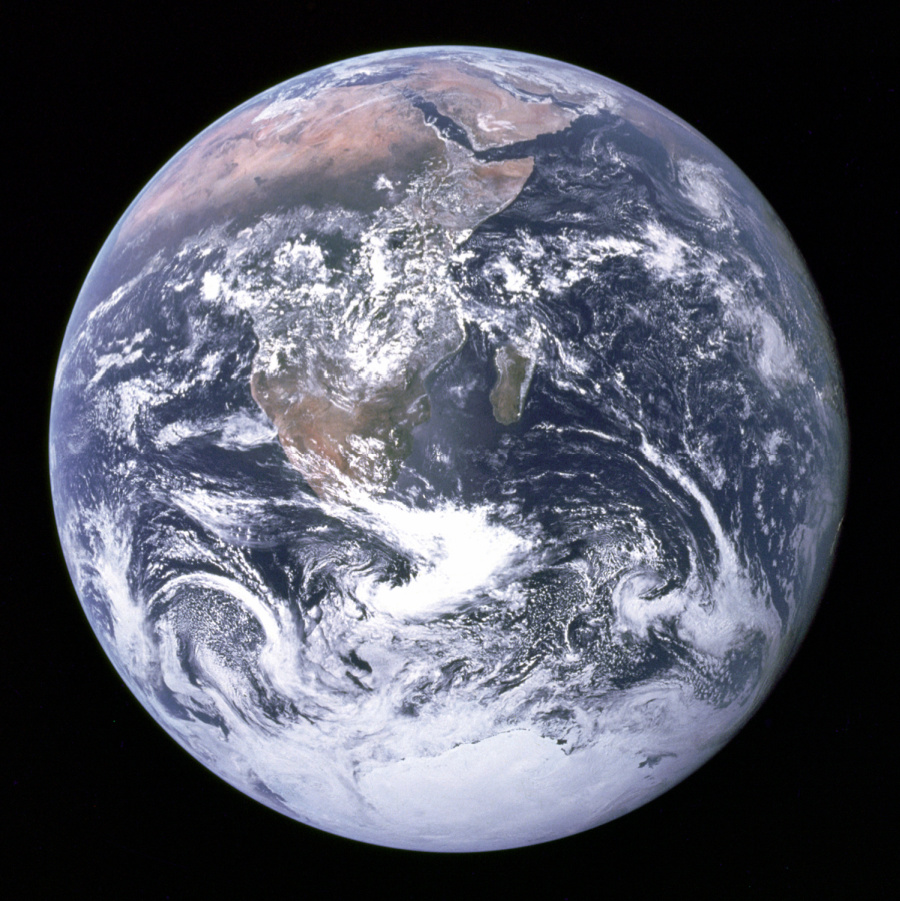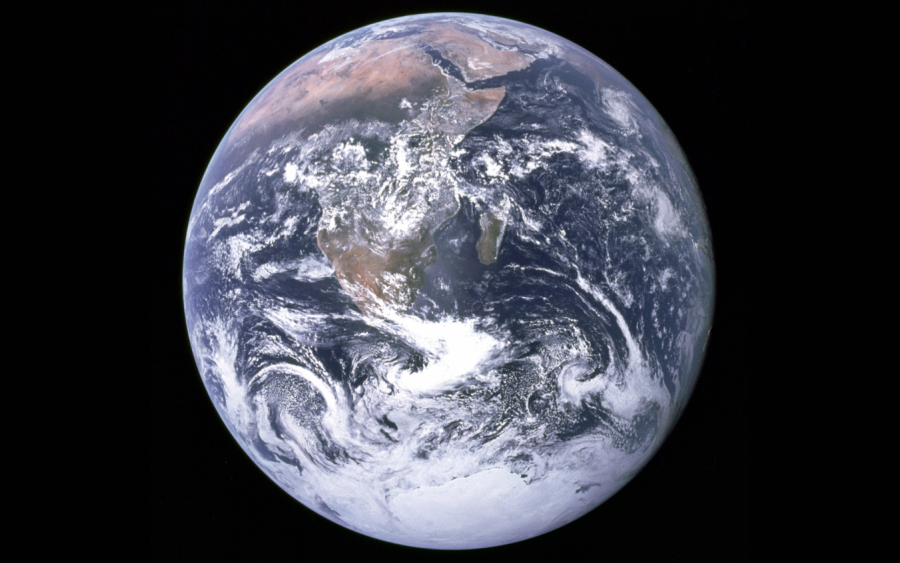In 1972, Apollo 17 captured the first photograph of Earth in its entirety. In this photo, you see deep blue oceans broken up by the rich greens and sandy browns of landmasses. Though the image is static, the swirling eddies of white, representing complex weather patterns, give it a form of movement — a sense of life.
And in fact, our beloved Earth is the only planet known to sustain life. It’s unique; one of a kind.
This famous photograph is known as “Blue Marble.”
Mobilized to Action: The Environmental Crisis
In the early 1960s, decades of automobile emissions, industrial waste and oil spills came to a head. Millions of cars filled the streets and big industry was belching out toxic chemicals without fear of legal action or negative press. Unaware of environmental pollution and its consequences, including its threat to public health, mainstream America thought dirty water and air merely meant progress and prosperity.
Then, shining a light through the smog, Rachel Carson’s bestselling environmental science book “Silent Spring” was published in 1962. Introducing many Americans to the powerful impact humans have on the natural world, more and more people became aware of the large-scale, adverse effects of the environmental crisis on Earth’s health, its wildlife and us.
Counterpoint: Counterculture and the U.S. Government
Reaching a fever pitch, evidence of the mounting crisis filled the news. The Santa Barbara oil spill in 1969 dumped 200,000 gallons of oil in the Pacific Ocean. Later that year, toxic waste floating on the Cuyahoga River in Ohio was set ablaze. Pervasive smog in major U.S. cities made headlines, spurring Americans, as well as political leaders, to demand change.
 A crowd of people gather for the first Earth Day in New York City, April 1970. The New York Public Library, Archives & Manuscripts
A crowd of people gather for the first Earth Day in New York City, April 1970. The New York Public Library, Archives & ManuscriptsOne of Congress’s most passionate environmentalists, Senator Gaylord Nelson strived to harness the very same energy that was fueling counterculture, like student anti-war protests, and use it to raise public awareness about pollution. He believed that the same energy, compassion and concern the nation’s youth displayed for civil rights and the Vietnam War could be shown for the environmental crisis.
Soon after, Senator Nelson hired former Stanford University student Denis Hayes who recruited a small staff of student volunteers to facilitate events called Environmental Teach-Ins (later renamed Earth Day) across the country in April of 1970.
Those grassroots activists who had been fighting on separate fronts against factory pollution, raw sewage, pesticides, toxic dumps, loss of wilderness and wildlife extinction finally had a movement around which to unite: Earth Day.
 The bald eagle, the national symbol of the United States, was on the first endangered species list.
The bald eagle, the national symbol of the United States, was on the first endangered species list. And the Earth Moved
Garnering support from people and entities of all political and socioeconomic backgrounds, from urbanites and business executives to farmers and small-town activists, the Earth Day movement in 1970 achieved a rare bipartisan and social alignment. It inspired folks from all walks of life to band together and form a united front to protect our planet.
Earth Day also sparked change on a governmental level. It led to the creation of the United States Environmental Protection Agency and the passage of novel environmental laws, including the Endangered Species Act, the Clean Air Act and the Federal Insecticide, Fungicide, and Rodenticide Act. These laws have protected millions of people and safeguarded water, wildlife and wild places across the country.
As the years passed, Earth Day mobilized millions of people across nations, elevating environmental issues to a global level. Earth Day didn’t just unify the country; it unified the world.
And just two years following the very first Earth Day, from a distance of about 18,000 miles from the planet’s surface, the first full-color portrait of our world in all her special, life-sustaining entirety was captured.
The Rest Is [Not Just] History
It’s the future.
The “Blue Marble” photo grants us perspective: Our place in the world’s history is a small one. Born 4.5 billion years ago (give or take 50 million years), Earth has been home to humans for only .007% of its existence. That means for 99.993% of this planet’s history, we didn’t exist. And yet, we’ve made an incredible impact in an incredibly short time — and we can continue making an impact, just one of a different nature.
 "Blue Marble" by the crew of Apollo 17 (1972). NASA public archives
"Blue Marble" by the crew of Apollo 17 (1972). NASA public archivesThe 21st century brings with it a new set of environmental challenges, from climate change and sea level rise to plastic pollution and species decline. And while saving the world seems like a tall order, you can start by becoming active in your community. Organize or participate in litter sweeps to remove pollution from your favorite places. Choose alternatives to single-use plastic and share solutions with your family, friends and neighbors. Support conservation efforts you’re passionate about, from wildlife rehabilitation and preservation to citizen science research. Lastly, stay informed so you can educate and inspire those around you to make small moves that make a great impact.
And remember, as you appreciate the many life-giving wonders the “Blue Marble” has to offer: She’s our entire world.
Every day is Earth Day. Participate in conservation events happening in your community and beyond.
Published April 8, 2022


